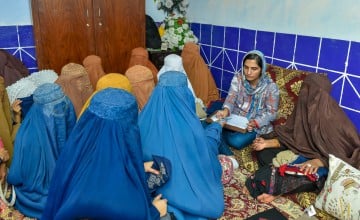
Read our 2023 annual report

Knowledge Hub
In the past decade, the global refugee population has more than doubled, with 37.9 million refugees recorded by the United Nations High Commissioner for Refugees in 2024.
A common misconception, however, is where refugees flee. In most cases, people affected by the world’s largest refugee crises aren’t able to make it to high-income countries in Europe or North America. Instead, most take shelter in neighbouring countries. Based on UNHCR data, here are those 10 countries as we enter 2025, as well as some of the challenges faced in some of those communities, and how Concern is responding.
10. Poland
Both Poland and Russia (No. 7) entered this list in 2022, owing to the conflict in Ukraine. All told, the country is hosting 980,000 refugees, 98% of whom are from Ukraine. There are also roughly 8,800 refugees from Belarus and nearly 2,900 from Russia.

9. Bangladesh
Virtually all of the 984,000 refugees currently living in Bangladesh are stateless Rohingya, who began seeking asylum en masse in 2017 after violence broke out in Myanmar’s Rakhine State. In that time, the city of Cox’s Bazar has become home to the world’s largest refugee camp, which in turn has been hit hard in the last seven years by fires, floods, and outbreaks. Concern has been in Bangladesh for over 50 years, working with both refugee and host communities, and was among the first to respond to the Rohingya crisis.

8. Ethiopia
Ethiopia is host to over 997,000 refugees, 42% of whom have escaped conflict in nearby South Sudan, and 31% from Somalia. Most live in 24 refugee camps established in five of the country’s 12 regional states, though a small percentage (roughly 70,000 according to last year’s data) live in the country’s capital of Addis Ababa.

7. Russia
Like Poland, the Russian Federation became a leading host country for refugees beginning in 2022 with the escalation of conflict in Ukraine. In 2024, that number is estimated to be just over 1.22 million people, 99.7% of whom are from Ukraine.
6. Chad
Chad’s refugee population nearly doubled in 2023 with the onset of the crisis in Sudan. Today, of the 1.24 million refugees hosted in the Sahelian country, over 1.06 million are from neighbouring Sudan. An additional 136,000 have also sought refuge from protracted conflict in the Central African Republic.
Owing to the overnight surge of Sudanese refugees last year, the asylum process begins with border camps for initial arrivals, with the UNHCR working to process applications as quickly as possible so civilians could be relocated to one of 16 camps. However, as of August 2024, relocations have been paused owing to rains and flooded roads in the region. Funding is of the utmost importance to accommodate the overcrowded and under-resourced sites, especially as we enter 2025.

5. Pakistan
Pakistan is host to approximately 1.58 million refugees, almost all of whom are from Afghanistan. Many have lived in the country for decades in the wake of the Soviet-Afghan War (1979-1989). Another influx came in 2001. The protracted nature of these displacements has led to many families living in compromised circumstances for generations. The fate of many Afghans still in Pakistan remains unclear; a repatriation order in 2023 set to go into effect this year has been delayed until June 30, 2025. Several thousand have already returned home.

4. Uganda
Policymakers in Uganda have shaped and reshaped policy in recent years around providing safe and dignified shelter for an increasingly large refugee population that has grown from from 477,000 in 2015 to over 1.65 million in 2023. Over half (some 948,000) are from South Sudan, while an additional 30% (520,000) are from the Democratic Republic of the Congo.
3. Germany
In recent years, out of the top countries that take in the most refugees, Germany was the only high-income country on the list. This changed in 2022 with the escalation of conflict in Ukraine, which has made large host communities out of Poland and Russia. But that conflict also nearly doubled Germany’s refugee population in less than a year. It currently sits at 2.66 million. Of that, 1.14 million are from Ukraine, with an additional 716,000 from Syria, 267,000 from Afghanistan, and 143,000 from Iraq.
2. Türkiye
Over 3.14 million refugees are currently being hosted in Türkiye. The majority (3.11 million) are Syrians under temporary protection, most of whom live in host communities although still at bare-minimum conditions. Türkiye also has a large number of refugees from Iraq (12,900) and Afghanistan (12,500).
1. Iran
In 2022, Iran re-classified its refugee system, which led to a major increase in legally-documented refugees (840,000 to over 3 million), though many had been living in the country for some time. Today, 3.76 million refugees are hosted in the country, which also represents an increase in refugees displaced from neighbouring Afghanistan (3.75 million people).
Concern's work with refugees
Last year alone, Concern responded to 66 emergencies in 20 countries, reaching 15.5 million people with urgent necessities such as shelter, psychosocial support, healthcare, and food as well as longer-term livelihood training that benefit both displaced and host communities.
Concern’s response to the world’s displacement crisis is in keeping with the Comprehensive Refugee Response Framework, approved by all 193 Member States of the United Nations in September, 2016. Our work with refugees focuses on easing pressure placed on host communities and building self-reliance among displaced communities.





